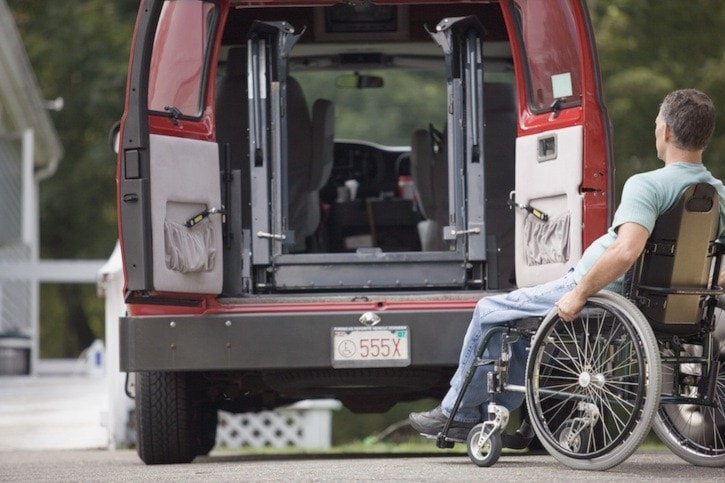If you need to use a wheelchair access van in the Nelson area, and you don’t own one, forget it. Randi Jensen found this out recently when she decided to take her mother to a family gathering on a Sunday afternoon.
Her mother has dementia and lives at Jubilee Manor.
“When Mom was first in care, I took her for car rides, but she is now immobilized,” says Jensen, who lives on the North Shore.
“I thought, ‘Well, I could rent a van or pay for a taxi,’ but there was nothing available. I tried the HandyDART but it is very restricted. When someone has dementia you need flexibility.”
Jensen is one of the people behind a move to explore the feasibility of the Kootenay Carshare Cooperative buying a wheelchair access van. The carshare has posted a survey online, asking the public whether, how often, and under what circumstances they would use such a van.
The survey can be found at https://www.surveymonkey.com/r/S8YH2VS. Print versions of the survey can be picked up at Nelson CARES, 521 Vernon Street and at Nelson & District Seniors Coordinating Society, 719 Vernon Street.
Moving Together
The idea of involving carshare in transportation solutions for seniors is one of the recommendations in Moving Together: a Collaborative Approach to Addressing Seniors’ Transportation Barriers, published recently by the Nelson Cares Society.
“We know about the important connection between social isolation and seniors’ wellbeing,” says Corrine Youni, the lead author of the report. “We approached car share, and they said if we can identify there is enough of a need, they would consider it.”
Changes to transit system recommended
The report identifies a number of changes that could be made in the regional transit system to make life easier for seniors, but they involve tweaking the existing system rather than recommending new routes or more busses.
For example, Youni says, “We already have a bus that goes from the North Shore to Trail, but you have to change buses in Castlegar. We are trying to work with the transit providers. Maybe the passengers could stay on one bus and the drivers change buses, and we would like the stop to be at the seniors centre.”
And there needs to be a bathroom break, says Youni. She says some seniors will stop going places of they are “too worried about being able to have a bathroom break. If it is not made public that there is a scheduled bathroom break, they won’t go.”
But it's not entirely about transit
The report also includes recommendations that HandyDART run twice a week from Kootenay Lake Hospital to Trail, that there be publicly owned shuttle buses, that doctors and the hospitals consider transit schedules when setting appointments, that more volunteer driver programs be created, and that a transportation animator position be created to develop multi-media education campaigns.
Rural seniors most affected
Youni says most seniors have not prepared for the day they can no longer drive. When that day comes, the resulting immobilization can effect shopping for food, social life, medical care, and interaction with families. And she says that rural seniors are the ones most likely to be isolated.
“No one wants to think about getting older, and that the future might be quite different for us as time goes by,” says Youni. “People who have driven their whole lives have never used public transit and assume it won’t meet their needs. We do have other transportation resources in the community.”
“A tsunami of baby boomers”
The report stresses the importance of public education aimed at seniors and at social agencies. That’s because the problem will only get bigger, Youni says, because there is a new breed of senior who won’t be satisfied to stay at home once they can’t drive.
“We have a tsunami of baby boomer seniors. A lot of them will be able to work or have to work, and a lot of them are very active. At the hub of this is transportation.
Many of them are coming into old age with huge debt loads, minimal savings, and very small pensions.”
Carshare: a 10:1 ratio
Carshare coordinator Colleen Doyle says her organization will have to decide, after getting the survey results, whether it would be worthwhile to buy a van, although Youni says she hopes to fundraise for it or have it donated.
Doyle said the basic ratio is 10:1. To make one carshare vehicle worthwhile you need ten people who will use it regularly. But it’s not quite that simple.
“If those ten people say they would use it once a month, that would not be the level of usage we would need.”
